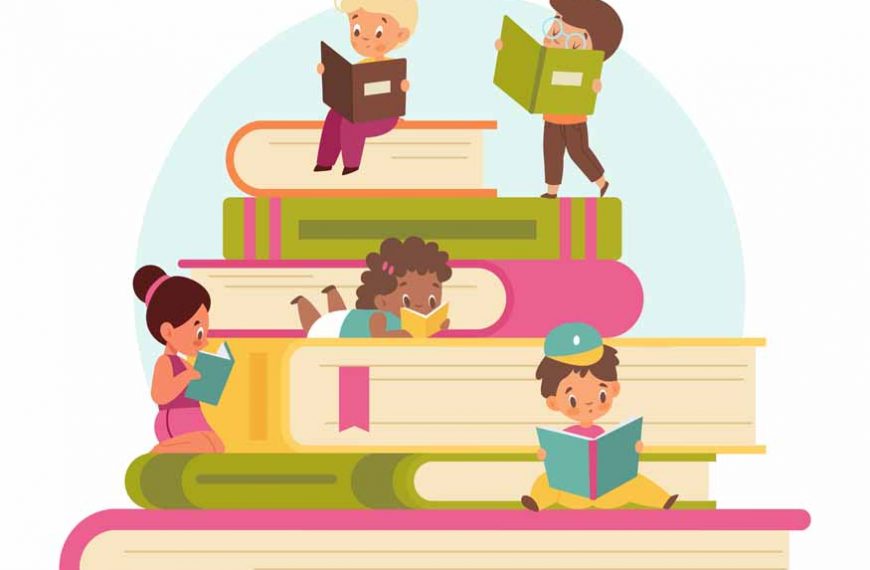Understanding Reading Levels: Importance, Types, and Assessment
Reading is a vital ability in school that opens the door to information and comprehension. But not all readers are the same, and people differ in their capacity to understand and interact with written information. Academics and educators have devised a system of evaluating reading proficiency to account for this variability. To guarantee that they are presenting the kid with reading resources that are difficult and engaging enough to develop abilities, teachers and parents who struggle to place children into appropriate reading levels require a standard scale with established criteria. Many children’s books feature labels for grade levels or ages drawn from these scales, which educators have used to measure children’s reading skills. The goal of this blog is to examine the idea of reading levels by defining the different kinds of reading, deciphering the reading level chart, and analyzing the different degrees of reading comprehension. Readers will have a better knowledge of how reading levels are evaluated and their importance in education after this investigation.
What Are Reading Levels?
Reading levels are a systematic method of classification that divides reading materials into groups according to their difficulty and the abilities needed to understand them. In order to maximize learning opportunities, texts should be matched with readers’ competency. Analyzing a variety of elements, such as vocabulary, sentence structure, topic difficulty, and overall comprehension requirements, is necessary for determining reading level.
Types of Reading:
Understanding the various styles of reading is crucial before delving into the nuances of reading levels. These categories specify how readers engage with texts and have an impact on the choice of suitable resources for every individual. The main categories of reading consist of the following:
- Skimming: This entails skimming a text to acquire a broad understanding of its substance and important points. Before doing a more in-depth reading, skimming is frequently employed to preview the content.
- Scanning: Finding particular information inside a text is what scanning implies. Readers search for pertinent information without reading every word using keywords or phrases.
- Close Reading: A close reading entails analyzing a book in great detail. It calls on readers to interact with the text critically, think about its implications, and decipher hidden meanings.
- Critical Reading: Beyond comprehension, critical reading entails assessing the text’s veracity, biases, and logical coherence. The author’s arguments are evaluated by readers, who then create their own conclusions.
- Extensive Reading: With the goal of strengthening basic language abilities and comprehension, this kind of reading concentrates on reading a lot of content. It is frequently applied in situations involving language learning.
Decoding the Reading Level Chart:
The reading level chart is one of the most important tools for determining reading proficiency. This chart gives educators a visual picture of the increase in reading difficulty so they can pair learners with the right materials. It frequently has sub-levels for each category, such as beginner, intermediate, and advanced. When navigating the wide ocean of reading resources, the chart is a useful tool for teachers, parents, and students.
There are various sections in the reading level chart:
- Lexile Level: A popular tool for determining reading complexity and reader proficiency is the Lexile Framework for Reading. The resultant Lexile score aids educators in determining if a work is appropriate for a particular reader.
- Guided Reading Level: This method offers a variety of levels from A to Z and classifies books according to their degree of difficulty. Educators use this measure to give kids at different levels of reading development tailored instruction and practise.
- DRA (Developmental Reading Assessment) Level: DRA is another method that evaluates pupils’ reading abilities and determines a level for them. It takes into account elements including accuracy, fluency, and understanding.
- Fountas & Pinnell Level: This technique, which scores books using a scale based on letters, was created by literacy specialists Gay Su Pinnell and Irene Fountas. It takes into account several aspects of text complexity, such as language and literary elements.
Three Assessment Scales:
The three most popular assessment instruments are the DRA Levels or the Development Reading Assessment, the Guided Reading levels, and the Lexile Measures. Each of these instruments makes an effort to give educators and parents information about a child’s reading abilities, however, each differs in complexity and administration. A summary of each approach is given below. The three most popular assessment instruments are the DRA Levels or the Development Reading Assessment, the Guided Reading levels, and the Lexile Measures. Each of these instruments makes an effort to give educators and parents information about a child’s reading abilities, however, each differs in complexity and administration. A summary of each approach is given below.
Lexile Measures:
MetaMetrics, Inc developed the scale for Lexile Measures. The scale goes from “BR” for beginning readers up to 1600L, where lower numbers indicate poorer levels of reading comprehension and proficiency. Higher levels signify the capacity to understand challenging content that calls for proficient reading abilities.
A student’s achievement on a standardized reading exam determines their Lexile reader measure score. The ability to retake the assessment at regular intervals will show how the student’s reading abilities are developing.
To assist educators and parents in choosing reading materials that are appropriate for a reader’s ability level, MetaMetrics provides Lexile text measurements to books as well as other reading materials. It is not required for any one reader to compare a “Lexile reading measure” exactly to a “Lexile text measure,” but the Lexile measure does assist in identifying reading materials at the appropriate degree of difficulty for each individual. It helps to develop abilities to read content that is above a tested “Lexile reader score.” Readers often feel at ease with content that is 50L to 100L above their reading level.
DRA Levels:
The “Developmental Reading Assessment” was developed in 1986 by a team of educators. DRA tests start with the student reading a text that is recognised to be challenging. The instructor assesses comprehension by asking a number of standardized questions when the reading assignment is finished. To track the development of a student’s reading abilities, teachers should give the exam to them numerous times during the academic year. Results from numerous distinct reading skills, including fluency, phonemic awareness, and alphabetic principles, are included in test scores.
Finding books that a kid can read comfortably is simple because many children’s books have a DRA level. Building skills is made more accessible by providing a variety of books with a little more difficulty.
Levels of Reading Comprehension:
Understanding what is being read requires more than simply being able to understand words. It includes the capacity to comprehend, ponder, and extrapolate the meaning of a text. Different reading comprehension levels indicate the level of comprehension attained:
- Literal Comprehension: At this level, readers are able to understand the text’s summary meaning. They are able to recognise the material’s explicit facts and details.
- Inferential Comprehension: In order to understand inferentially, readers must go beyond the text’s surface and draw conclusions from the available data. They make connections, form judgements, and decipher underlying meanings.
- Critical Comprehension: Identifying the author’s tone and prejudice, as well as the text’s underlying themes and messages, are all necessary for critical understanding. The reader evaluates the veracity of the information supplied.
- Creative Comprehension: At this level, readers expand the text’s ideas, draw links to their own lives, and take into account opposing viewpoints in order to participate in creative thinking.
The Significance of Reading Levels in Education:
It’s important to comprehend reading levels for a number of reasons:
- Differentiated Instruction: Teachers may adjust their lesson plans and reading assignments to fit the reading abilities of specific students, giving them each the challenges and encouragement they need.
- Language Development: Reading materials that align with a student’s reading level contribute to language development, vocabulary expansion, and improved comprehension skills.
- Confidence Building: When kids are given materials that are appropriate for their reading levels, they succeed, boosting their self-esteem and desire to read more.
- Skill Progression: The idea of reading levels highlights the gradual nature of reading skill development, emphasizing that it is a journey with clear checkpoints.
In conclusion, the notion of reading levels ensures that readers engage with texts that suit their competency and comprehension capacities, playing a significant role in the educational environment. The many levels of reading comprehension provide a thorough framework for rating and classifying reading materials, the reading level chart, and the various types of reading. Understanding these ideas will enable educators, parents, and students to work together to promote a culture of good reading habits that result in enhanced abilities, more profound comprehension, and a lifetime love of reading.















